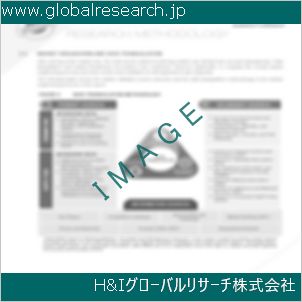Table of Contents
1 Industry Overview of Formaldehyde
1.1 Definition and Specifications of Formaldehyde
1.1.1 Definition of Formaldehyde
1.1.2 Specifications of Formaldehyde
1.2 Classification of Formaldehyde
1.3 Applications of Formaldehyde
1.3.1 Nuclear Application
1.3.2 Non-Nuclear Application
1.4 Industry Chain Structure of Formaldehyde
1.5 Industry Overview and Major Regions Status of Formaldehyde
1.5.1 Industry Overview of Formaldehyde
1.5.2 Global Major Regions Status of Formaldehyde
1.6 Industry Policy Analysis of Formaldehyde
1.7 Industry News Analysis of Formaldehyde
2 Manufacturing Cost Structure Analysis of Formaldehyde
2.1 Raw Material Suppliers and Price Analysis of Formaldehyde
2.2 Equipment Suppliers and Price Analysis of Formaldehyde
2.3 Labor Cost Analysis of Formaldehyde
2.4 Other Costs Analysis of Formaldehyde
2.5 Manufacturing Cost Structure Analysis of Formaldehyde
2.6 Manufacturing Process Analysis of Formaldehyde
3 Technical Data and Manufacturing Plants Analysis of Formaldehyde
3.1 Capacity and Commercial Production Date of Global Formaldehyde Major Manufacturers in 2023
3.2 Manufacturing Plants Distribution of Global Formaldehyde Major Manufacturers in 2023
3.3 R&D Status and Technology Source of Global Formaldehyde Major Manufacturers in 2023
3.4 Raw Materials Sources Analysis of Global Formaldehyde Major Manufacturers in 2023
4 Capacity, Production and Revenue Analysis of Formaldehyde by Regions, Types and Manufacturers
4.1 Global Capacity, Production and Revenue of Formaldehyde by Regions 2019-2024
4.2 Global and Major Regions Capacity, Production, Revenue and Growth Rate of Formaldehyde 2019-2024
4.3 Global Capacity, Production and Revenue of Formaldehyde by Types 2019-2024
4.4 Global Capacity, Production and Revenue of Formaldehyde by Manufacturers 2019-2024
5 Price, Cost, Gross and Gross Margin Analysis of Formaldehyde by Regions, Types and Manufacturers
5.1 Price, Cost, Gross and Gross Margin Analysis of Formaldehyde by Regions 2019-2024
5.2 Price, Cost, Gross and Gross Margin Analysis of Formaldehyde by Types 2019-2024
5.3 Price, Cost, Gross and Gross Margin Analysis of Formaldehyde by Manufacturers 2019-2024
6 Consumption Volume, Consumption Value and Sale Price Analysis of Formaldehyde by Regions, Types and Applications
6.1 Global Consumption Volume and Consumption Value of Formaldehyde by Regions 2019-2024
6.2 Global and Major Regions Consumption Volume, Consumption Value and Growth Rate of Formaldehyde 2019-2024
6.3 Global Consumption Volume and Consumption Value of Formaldehyde by Types 2019-2024
6.4 Global Consumption Volume and Consumption Value of Formaldehyde by Applications 2019-2024
6.5 Sale Price of Formaldehyde by Regions 2019-2024
6.6 Sale Price of Formaldehyde by Types 2019-2024
6.7 Sale Price of Formaldehyde by Applications 2019-2024
6.8 Market Share Analysis of Formaldehyde by Different Sale Price Levels
7 Supply, Import, Export and Consumption Analysis of Formaldehyde
7.1 Supply, Consumption and Gap of Formaldehyde 2019-2024
7.2 Global Capacity, Production, Price, Cost, Revenue, Supply, Import, Export and Consumption of Formaldehyde 2019-2024
7.3 USA Capacity, Production, Price, Cost, Revenue, Supply, Import, Export and Consumption of Formaldehyde 2019-2024
7.4 EU Capacity, Production, Price, Cost, Revenue, Supply, Import, Export and Consumption of Formaldehyde 2019-2024
7.5 China Capacity, Production, Price, Cost, Revenue, Supply, Import, Export and Consumption of Formaldehyde 2019-2024
7.6 Japan Capacity, Production, Price, Cost, Revenue, Supply, Import, Export and Consumption of Formaldehyde 2019-2024
8 Major Manufacturers Analysis of Formaldehyde
8.1 Manufacturer One
8.1.1 Company Profile
8.1.2 Product Picture and Specifications
8.1.2.1 Type I
8.1.2.2 Type II
8.1.2.3 Type III
8.1.3 Capacity, Production, Price, Cost, Gross and Revenue
8.1.4 Contact Information
8.2 Manufacturer Two
8.2.1 Company Profile
8.2.2 Product Picture and Specifications
8.2.2.1 Type I
8.2.2.2 Type II
8.2.2.3 Type III
8.2.3 Capacity, Production, Price, Cost, Gross and Revenue
8.2.4 Contact Information
8.3 Manufacturer Three
8.3.1 Company Profile
8.3.2 Product Picture and Specifications
8.3.2.1 Type I
8.3.2.2 Type II
8.3.2.3 Type III
8.3.3 Capacity, Production, Price, Cost, Gross and Revenue
8.3.4 Contact Information
8.4 Manufacturer Four
8.4.1 Company Profile
8.4.2 Product Picture and Specifications
8.4.2.1 Type I
8.4.2.2 Type II
8.4.2.3 Type III
8.4.3 Capacity, Production, Price, Cost, Gross and Revenue
8.4.4 Contact Information
8.5 Manufacturer Five
8.5.1 Company Profile
8.5.2 Product Picture and Specifications
8.5.2.1 Type I
8.5.2.2 Type II
8.5.2.3 Type III
8.5.3 Capacity, Production, Price, Cost, Gross and Revenue
8.5.4 Contact Information
…
9 Marketing Trader or Distributor Analysis of Formaldehyde
9.1 Marketing Channels Status of Formaldehyde
9.2 Traders or Distributors with Contact Information of Formaldehyde by Regions
9.3 Ex-work Price, Channel Price and End Buyer Price Analysis of Formaldehyde
9.4 Regional Import, Export and Trade Analysis of Formaldehyde
10 Industry Chain Analysis of Formaldehyde
10.1 Upstream Major Raw Materials Suppliers Analysis of Formaldehyde
10.1.1 Major Raw Materials Suppliers with Contact Information Analysis of Formaldehyde
10.1.2 Major Raw Materials Suppliers with Supply Volume Analysis of Formaldehyde by Regions
10.2 Upstream Major Equipment Suppliers Analysis of Formaldehyde
10.2.1 Major Equipment Suppliers with Contact Information Analysis of Formaldehyde
10.2.2 Major Equipment Suppliers with Product Pictures Analysis of Formaldehyde by Regions
10.3 Downstream Major Consumers Analysis of Formaldehyde
10.3.1 Major Consumers with Contact Information Analysis of Formaldehyde
10.3.2 Major Consumers with Consumption Volume Analysis of Formaldehyde by Regions
10.4 Supply Chain Relationship Analysis of Formaldehyde
11 Development Trend of Analysis of Formaldehyde
11.1 Capacity, Production and Revenue Forecast of Formaldehyde by Regions and Types
11.1.1 Global Capacity, Production and Revenue of Formaldehyde by Regions 2024-2029
11.1.2 Global and Major Regions Capacity, Production, Revenue and Growth Rate of Formaldehyde 2024-2029
11.1.3 Global Capacity, Production and Revenue of Formaldehyde by Types 2024-2029
11.2 Consumption Volume and Consumption Value Forecast of Formaldehyde by Regions, Types and Applications
11.2.1 Global Consumption Volume and Consumption Value of Formaldehyde by Regions 2024-2029
11.2.2 Global and Major Regions Consumption Volume, Consumption Value and Growth Rate of Formaldehyde 2024-2029
11.2.3 Global Consumption Volume and Consumption Value of Formaldehyde by Types 2024-2029
11.2.4 Global Consumption Volume and Consumption Value of Formaldehyde by Applications 2024-2029
11.3 Supply, Import, Export and Consumption Forecast of Formaldehyde
11.3.1 Supply, Consumption and Gap of Formaldehyde 2024-2029
11.3.2 Global Capacity, Production, Price, Cost, Revenue, Supply, Import, Export and Consumption of Formaldehyde 2024-2029
11.3.3 USA Capacity, Production, Price, Cost, Revenue, Supply, Import, Export and Consumption of Formaldehyde 2024-2029
11.3.4 EU Capacity, Production, Price, Cost, Revenue, Supply, Import, Export and Consumption of Formaldehyde 2024-2029
11.3.5 China Capacity, Production, Price, Cost, Revenue, Supply, Import, Export and Consumption of Formaldehyde 2024-2029
11.3.6 Japan Capacity, Production, Price, Cost, Revenue, Supply, Import, Export and Consumption of Formaldehyde 2024-2029
12 New Project Investment Feasibility Analysis of Formaldehyde
12.1 New Project SWOT Analysis of Formaldehyde
12.2 New Project Investment Feasibility Analysis of Formaldehyde
13 Conclusion of the Global Formaldehyde (CAS 50-00-0) Industry 2024 Market Research Report
| ※参考情報 ホルムアルデヒドは、化学式CH₂Oを持つ有機化合物で、最も簡単なアルデヒドの一種です。この化合物は、無色の気体であり、特有の刺激臭を持っています。ホルムアルデヒドは、さまざまな産業や家庭で広く利用されているため、その理解は非常に重要です。 ホルムアルデヒドは、常温常圧では気体ですが、比較的容易に水に溶解し、メタノールやエタノールにも溶けます。この特性は、ホルムアルデヒドを水溶液として扱う上で非常に便利です。ホルムアルデヒド水溶液はフォルマリンと呼ばれ、通常は37~40%濃度で使用されます。ホルムアルデヒドの分子は、炭素原子と酸素原子が二重結合していることから、反応性が高く、さまざまな化学反応を起こすことができます。 ホルムアルデヒドの主要な用途の一つは、合成樹脂の生産です。特に、尿素、フェノール、メラミンなどの樹脂と結合することで、耐熱性や耐水性を持つ材料が得られます。このような樹脂は、建築材料や家具、床材、接着剤などに利用されています。また、ホルムアルデヒドは消毒剤としても用いられています。その抗菌特性から、医療分野での器具の殺菌や、皮革やテキスタイルの処理にも使用されます。 さらに、ホルムアルデヒドは化学合成の中間体としても重要です。化学工業では、ホルムアルデヒドを利用して、香料、染料、農薬など幅広い化合物の合成が行われています。このように、ホルムアルデヒドは多岐にわたる用途を持ち、その産業的重要性は高いです。 一方で、ホルムアルデヒドには健康へのリスクも伴います。屋内空気質の問題として、ホルムアルデヒドは揮発性有機化合物(VOCs)の一つとして認識されています。特に新たに製造された家具や建材からの放出が原因で、室内の濃度が高くなることがあります。ホルムアルデヒドの吸入は、目や皮膚の刺激、呼吸器系の問題を引き起こす可能性があり、長期的には発がん性も指摘されています。そのため、多くの国や地域ではホルムアルデヒドの使用や排出に関する規制が設けられています。 ホルムアルデヒドの関連技術としては、これを抑制したり、安全に取り扱ったりするための様々な方法が開発されています。例えば、ホルムアルデヒドの放出を抑制するための低ホルムアルデヒド材料の開発が行われています。これにより、家具や建材に使用される樹脂中のホルムアルデヒド濃度を低減することが可能です。また、空気清浄技術も進化しており、ホルムアルデヒドを吸着または分解する機能を持つ製品が販売されています。 さらに、ホルムアルデヒドを安全に使用するための行動指針や基準も整備されてきています。例えば、ホルムアルデヒドを使用する際には、適切な換気を心がけることや、製品の取り扱い説明書に従うことが重要です。これにより、必要以上の曝露を防ぎ、健康リスクを低減することができます。 近年では、ヘルスケアや環境問題への関心が高まっているため、ホルムアルデヒドに関する研究も進展しています。さまざまな新しい材料の開発や、ホルムアルデヒドの代替物質の提案が行われており、安全で環境に優しい製品へのニーズが高まっています。これらの取り組みにより、ホルムアルデヒドを使用した製品の安全性が向上し、人々の健康や環境への配慮が強化されています。 総じて、ホルムアルデヒドは多様な用途を持つ一方で、その健康リスクも無視できない重要な化合物です。その利用にあたっては、適切な知識と対策を持って安全に取り扱うことが求められています。今後も、ホルムアルデヒドに関連する技術の進展や、より安全な代替物質の開発が期待されるところです。 |
❖ 免責事項 ❖
http://www.globalresearch.jp/disclaimer












